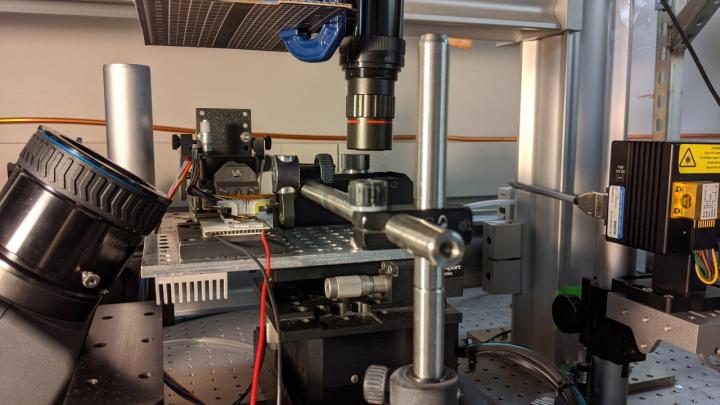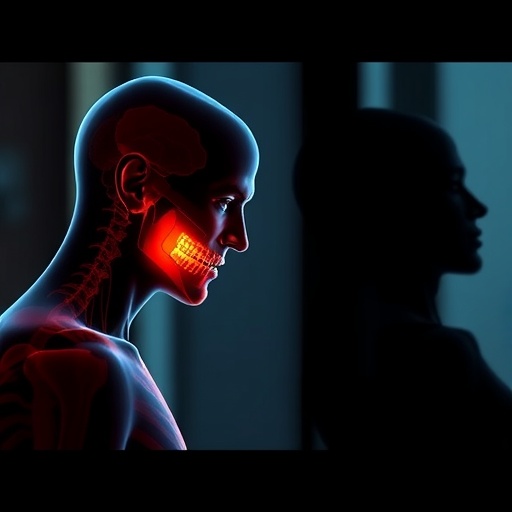
Credit: The University of Texas at Austin.
Modern communications technology, regardless of use, relies on a similar formula: devices send signals and information through data centers, towers and satellites en route to their final destination. The effectiveness of the communication relies on how well that information travels, and there are a variety of factors that can slow down that journey – geography, weather and more.
A new device created by researchers at The University of Texas at Austin can overcome challenges like bad weather to deliver more secure, reliable communications. This could aid military communications in challenging areas, improve the ability of self-driving cars to see the environment around them and speed up wireless data for potential 6G networks.
Ray Chen, professor in the Cockrell School of Engineering’s Department of Electrical and Computer Engineering and leader of the project, made a comparison to TV satellite dishes that go out or become fuzzy during poor weather. The same thing can happen with communications technology, and that’s the problem Chen wants to fix.
Chen’s device operates in an area of the light spectrum – mid infrared – that allows signal to penetrate through clouds, rain and other weather to get to their intended target without shedding significant amounts of light.
“Low light loss means signal can travel further, and through the earth’s atmosphere, with better integrity and less power consumption,” Chen said.
Chen’s findings were recently published in the journal Optica.
weather proof communicationsweather proof chip
The device is an indium phosphide chip capable of beam steering, the act of re-directing light in the direction of a specific target. The concept allows signal to be transmitted more accurately than other methods, reducing interference and saving power.
However, beam steering has its weaknesses that hold back mass adoption; namely that devices can only bounce light in narrow directions. Chen compares it with a person with poor peripheral vision.
However, Chen’s device features much wider angles for steering light, increasing the range by about 30 degrees compared to the other options, without moving parts or side lobes of light that trail off in various directions and decrease efficiency.
“For beam steering to be safe, you want to have a full view, you don’t want to have a bunch of blind spots,” Chen said.
A lot of self-driving cars are equipped with Light Detection and Ranging (LIDAR) technology that can sense the environment around it. Typically, these take the form of large devices attached to the top of cars with spinning arrays.
The LIDAR devices have to spin because of the limited field of vision, Chen said. And any time you rely on a moving part, there is a risk of it breaking. The chip Chen created doesn’t require moving parts because of its wider field of vision. And fewer blind spots in the technology increases safety in situations where momentary lapses can prove dangerous.
The chips can be integrated into everything from military vehicles, to satellites, to skyscrapers. Chen is working on infusing artificial intelligence into the device for environmental sensing. The mid infrared is a part of the light spectrum that humans can’t see without aids like night vision goggles, but devices in that range can pick up things like gas leaks and smoke stack emissions.
In big cities, where it’s not practical to dig deeply underground to lay fiber cables, these devices can increase internet speeds. Putting them atop skyscrapers can enable free-space optical communication, a technology that allows wireless data to travel through the air using light.
Chen’s next big step in the project involves field-testing the device and refining its packaging to enable its application in free-space optical communications.
###
Funding for the project came from the Office of Naval Research and the Air Force Research Laboratory.
Media Contact
Nat Levy
[email protected]
Original Source
http://www.
Related Journal Article
http://dx.




